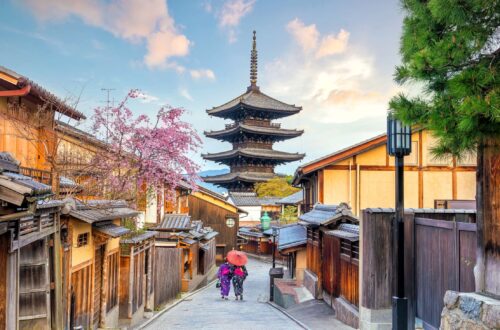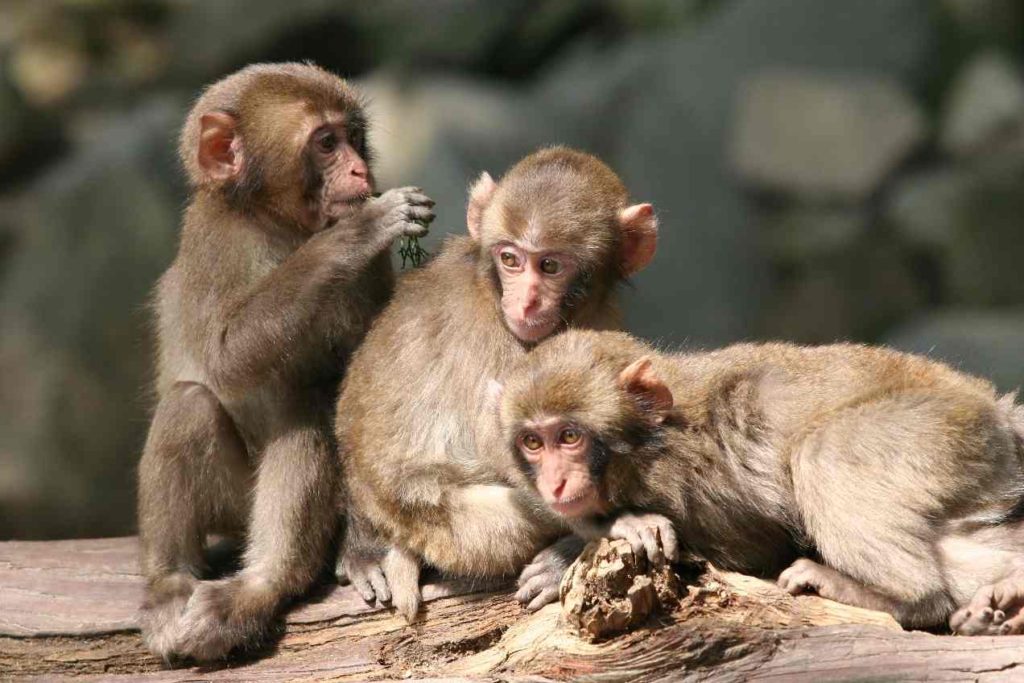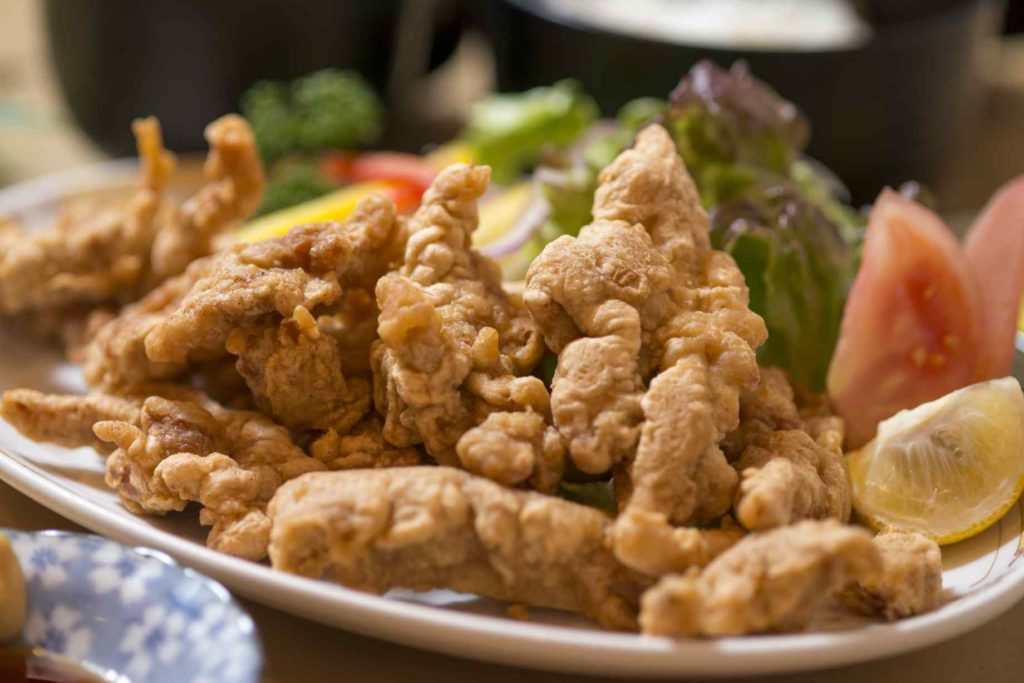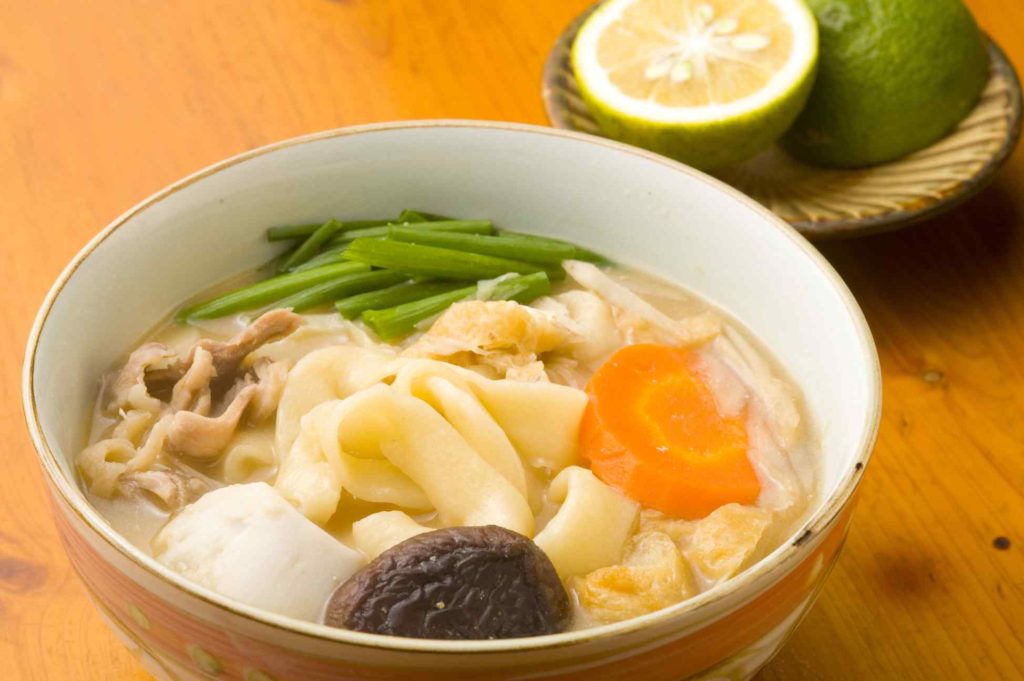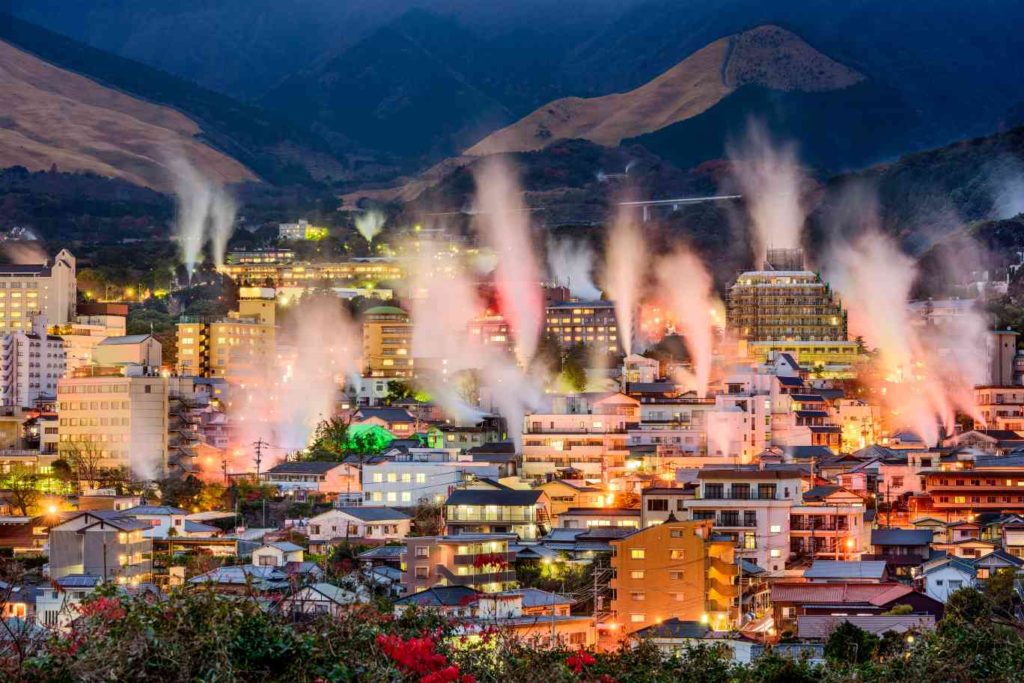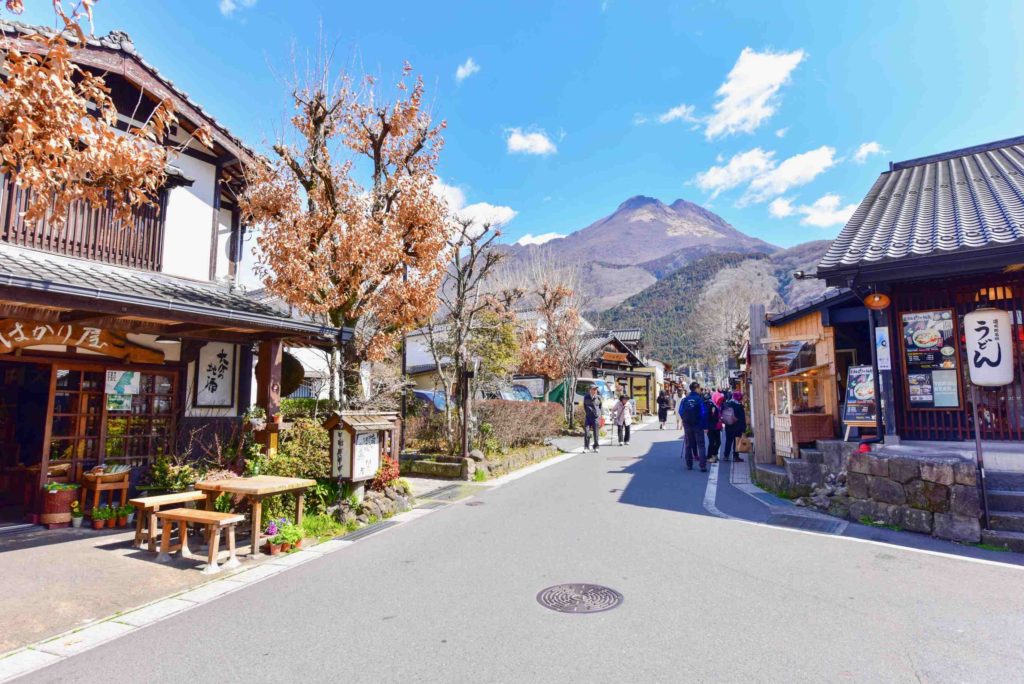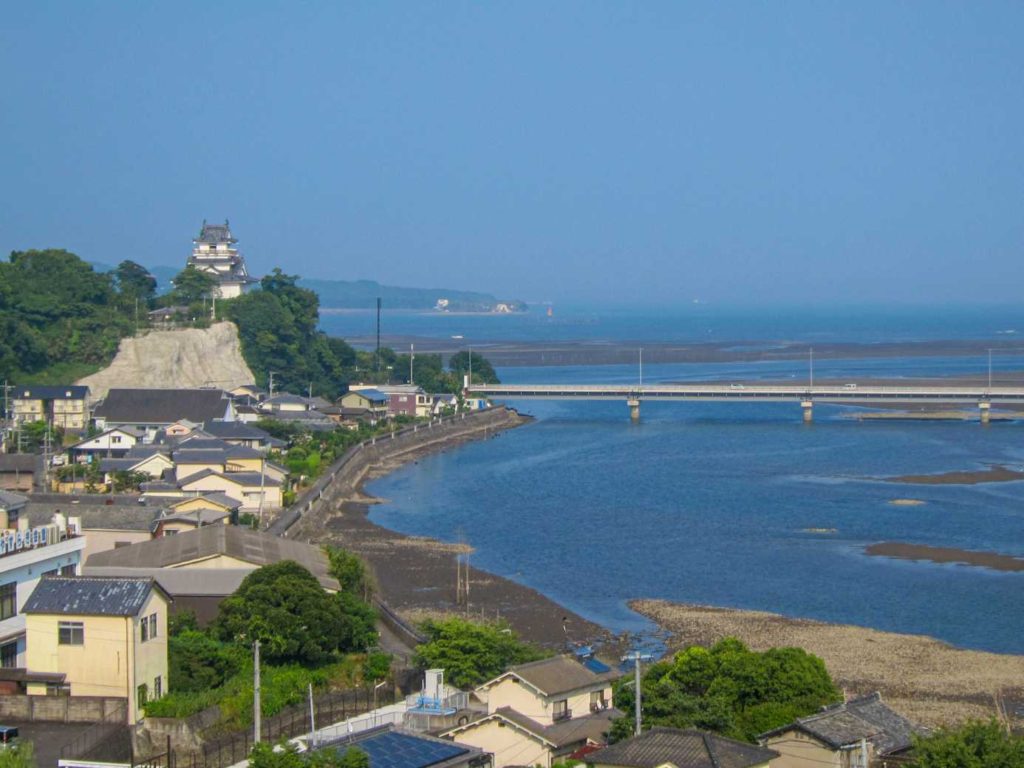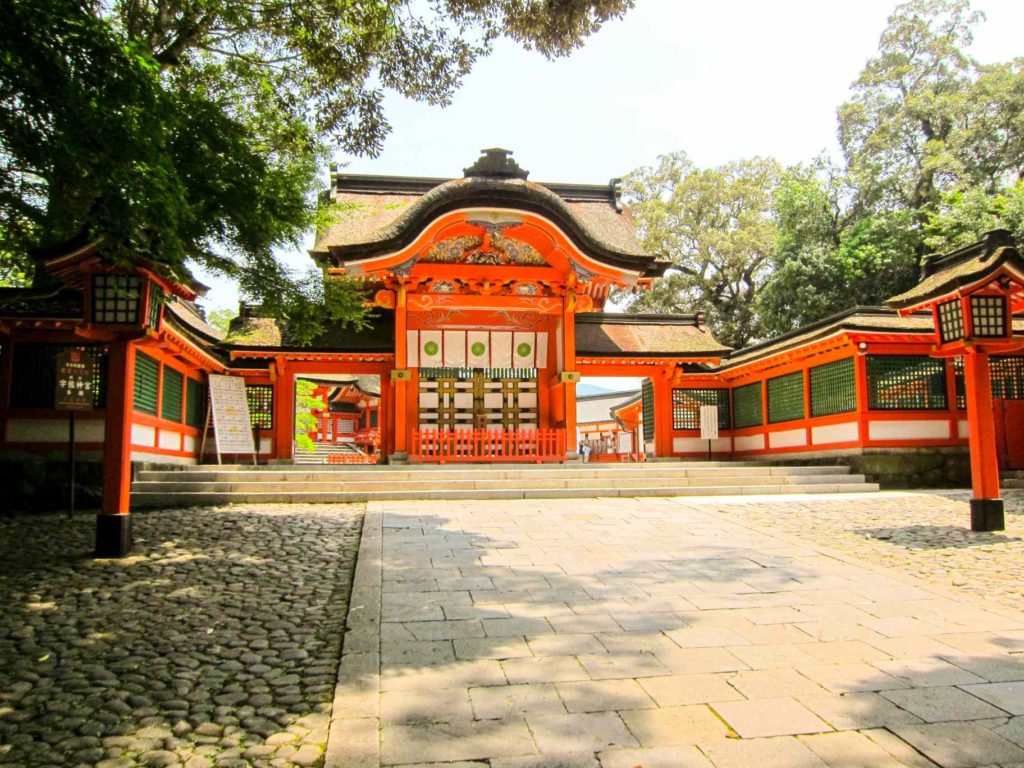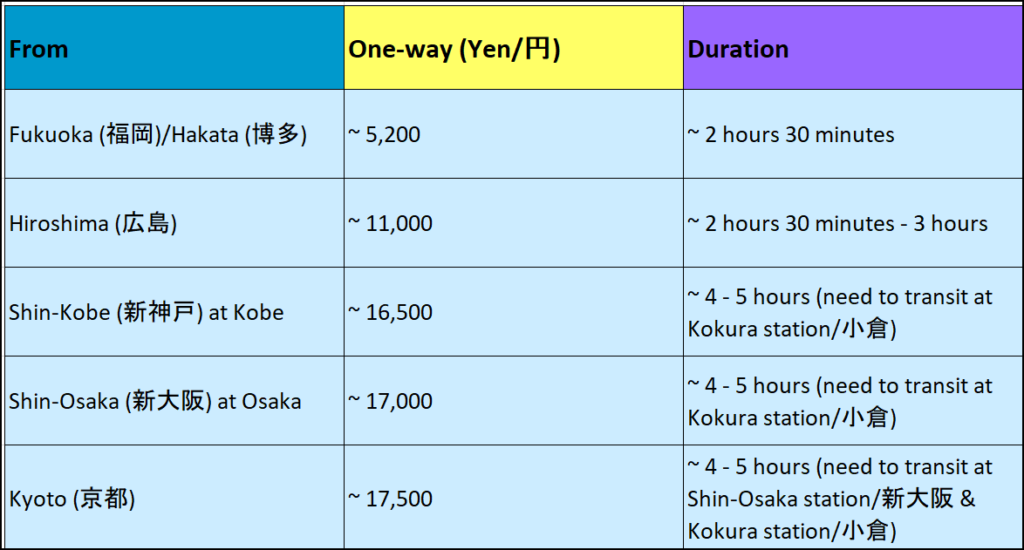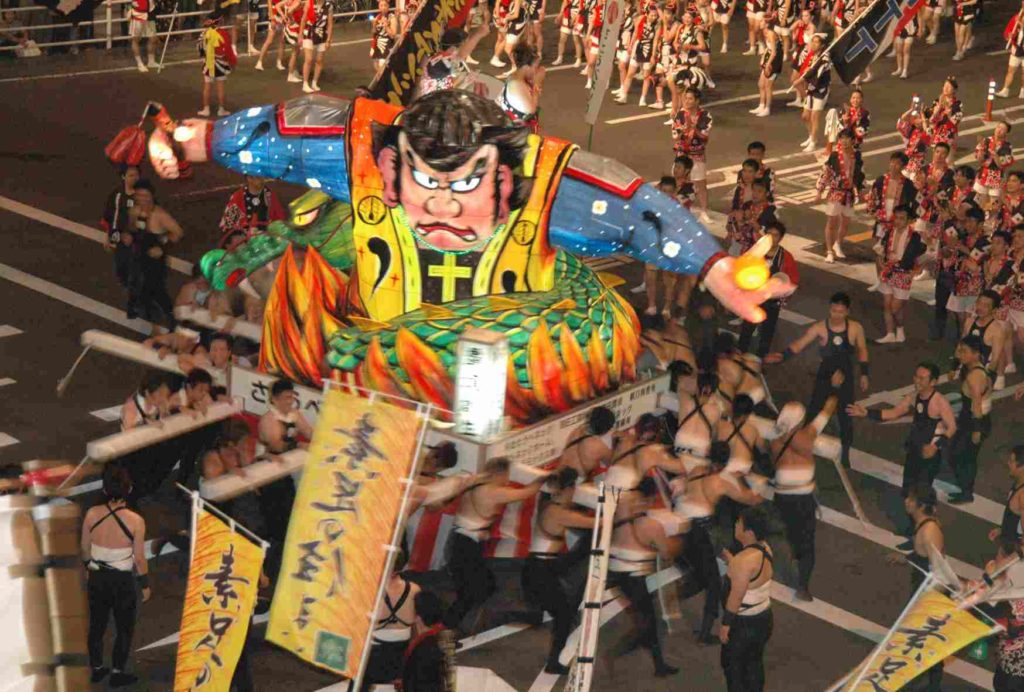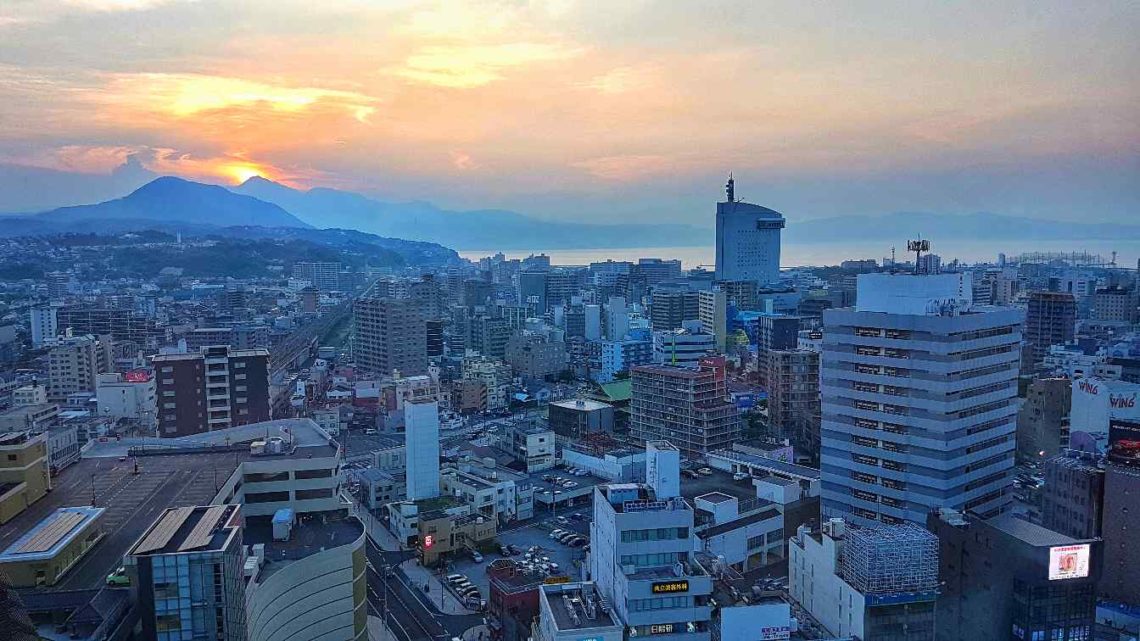
Oita – The Ultimate Travel Guide to the Peaceful Coastal City
Often when planning a trip to Japan, the city of Oita (pronounced ooi-ta/大分) is not exactly the first thing that pops up in the mind. In fact, when I was assigned to this city for my exchange back in 2011; I relatively knew nothing about it. So much so that when I informed everyone about my exchange, the first question everyone asked was “Where is it?”, accompanied with a puzzled face.
Little did I expect, Oita turned out to be a lovely place to stay while brushing up my Japanese skills. A peaceful city with a touch of countryside, it features a lovely mix of skyscrapers and also countryside landscapes. Being off the tourist radar helps too, as it remains free from tourist crowds; allowing myself to brush up my Japanese.
During my 6 months of exchange, I went on to explore the hot springs, nearby historical towns and villages. It certainly was a moment of realisation of how gorgeous the countryside of Japan is and how much it has to offer. What that said, read on to find out more about this peaceful city.
Table of Contents
History of Oita
According to the Ancient Records of Bungo province (Bungo no Kuni Fudoki/豊後国風土記), the name Oita originated sometime during the reign of the legendary Emperor Keikō (景行天皇) from AD 71 – 130. A man of giant physical stature, he visited the region and witness a vast plain of paddy fields. He then enthusiastically uttered “What a vast rice field! I shall name this land Okita-no-kuni”.
Okita-no-kuni (pronounced ookita-no-kuni/碩田国) literally means ‘the province with the vast rice field’. Despite this, it was later discovered that the region comprised various large landscapes including mountain ranges and coastlines. Subsequently, the name transformed from Okita-no-kuni to Oita (大分). Oi (大) refers to big while Ta (分) means parts/landscapes; referring to the various landscapes throughout the region.
Later in the 12th century during the Kamakura period (鎌倉時代), the central government assigned the ruling of the province to the Otomo clan (pronounced ootomo-shi/大友氏). In particular the Christian fanboy warlord/daimyo (大名), Otomo Sorin (大友宗麟) promoted Christianity and expanded trade throughout the region (along with the establishment of the first western style hospital in Japan). It was said during this period, Oita grew immensely; with the clan having established their power base and named it as Funai (府内).
During the 17th century Edo period (江戸時代), the Matsudaira clan (松平氏) took over the administration of the province. Unfortunately, little attention was paid to improve the growth of the town until the 20th century. It was only in the 1970s; where an industrial region was established and companies like Toshiba and Canon built their plants here as well. Shopping malls eventually sprouted across the city; along with the rise of skyscrapers. Nevertheless, today it remains a little industrial city; nestling within a hot spring region waiting to be discovered.
Exploring Oita
Exploring Oita is certainly different than other Japanese cities (e.g. Tokyo, Osaka and Kyoto); as the city itself doesn’t have much to offer in terms of attractions. Rather, it’s highlights are in the outskirts; from beautiful volcanic landscapes to rustic historical cities and mesmerising countryside. Furthermore for the hot spring fans, take note as Oita prefecture itself has the most number of onsens (温泉) within the country.
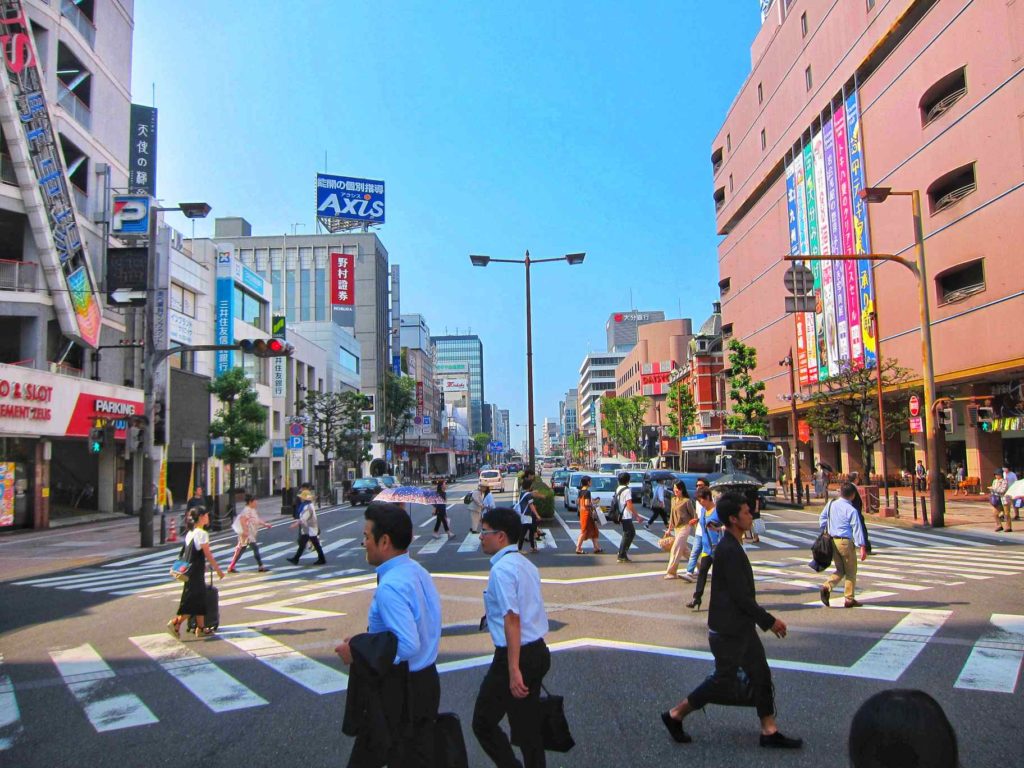
With that in mind, lets explore accordingly what this little city has to offer.
- Firstly, lets check out what the city has to offer.
- Then, check out some of the shopping spots in Oita.
- Discover some of the mouth-watering local delicacies of Oita.
- Afterwards, head towards the outskirts of the city to discover more hidden gems.
- Also, show me how to get to Oita.
- As well as, show me the accommodation options together with some extra travel tips.
Save In Pinterest
No time to read this Oita travel guide now? Click on the save button and pin it for later!
Attractions Within Oita City
Click here if you love museums, or here if you are looking for a peaceful place to take a stroll. On the other hand, if your legs are tired, check out the city’s amazing hot spring experience as well as the city’s nightlife for the night owls and partygoers. Or if you are coming together with kids, here are some attractions for considerations.
For The City Explorers
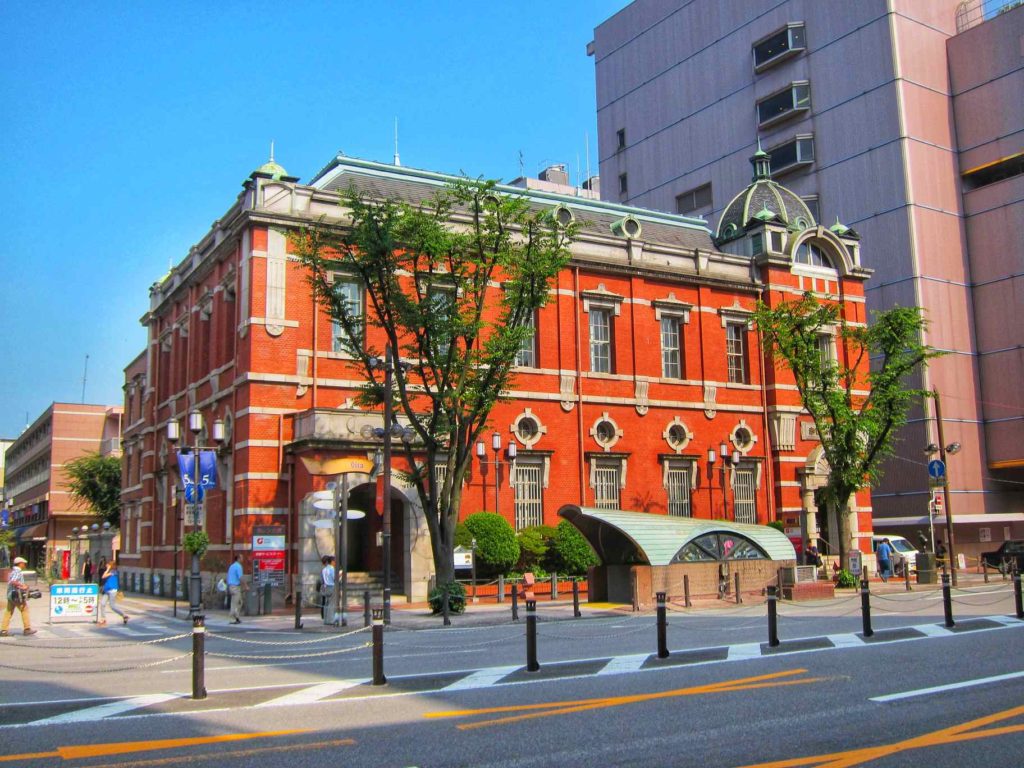
An elegant retro building built in 1910 and also formerly the HQ for the local Oita Bank (大分銀行). The designer of this building is Tatsuno Kingo (辰野金吾), who also designed the grand Tokyo Station (東京駅). One should pay close attention to its design, a combination of red bricks together with the elegant European style rooftop symbolises the Meiji era (明治時代), an era when Japan aggressively embraced modernisation and assimilated European influence into its society.
Definitely a heritage site that should not be missed by fans of history and architecture. Also, be sure to enter the building; as it hosts not only a shop that features local Oita products; but also contains pillars and foundations from the original building prior to the World War 2 bombings.
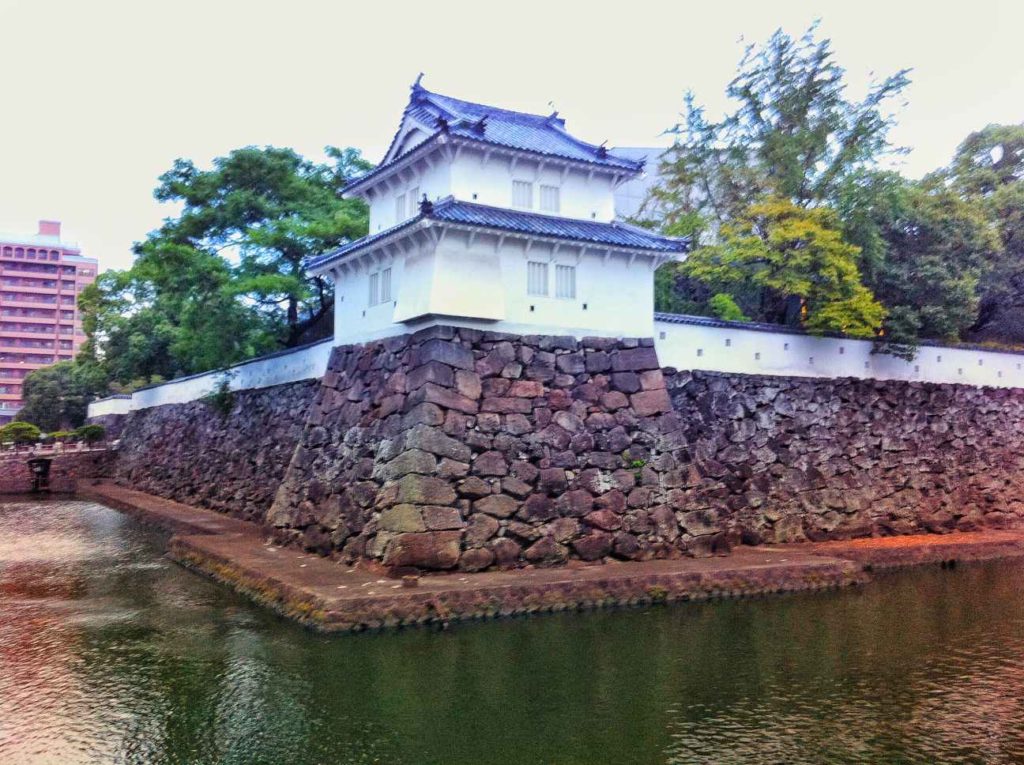
The city’s castle that was built in the 16th century; firstly by Fukuhara Naotaka (福原直高), and then by another warlord named Takenaka Shigetoshi (竹中重利); when the former committed suicide because he joined the losing side in the Battle of Sekigahara (関ケ原の戦い). Unfortunately, the castle was burnt down and later decommissioned in 1872. Nevertheless, several parts of the castle (the moat, walls and gate) were restored later on and today it remains a peaceful spot to walk leisurely within the city center.
Mar – Apr is without a doubt the best time to visit the castle grounds as during this time, the cherry blossoms will bloom; creating an overall dreamy feel to the surroundings.
For The Art Lovers

For the art and museum lovers on the other hand, do not forget to check out the Oita Prefecture Art Museum (大分県立美術館) or OPAM for short (15-minutes walk from Oita Station). OPAM features a unique design resembling a living room; while being covered with a wooden façade based on bamboo crafts and foldable glass walls. Also, the designer of the museum is Ban Shigeru (坂茂), a Pritzker Architecture Prize winner and famous for using papers as a building material.
Furthermore, the museum itself contains an art gallery that exhibits both traditional and contemporary Japanese arts; including paintings, sculptures as well as 3D works. Some of these include the works of Tanomura Chikuden (田能村竹田), an 18th century painter known for his melancholic paintings and Fukuda Heihachiro (福田平八郎), a Japanese-style painter who designed the Tokyo Imperial Palace. And if you are lucky, you may be able to check out special exhibitions at the same, as the museum occasionally organises special exhibits throughout the year as well. If you enjoy exploring a museum at your own pace, rest assured that this is a wonderful candidate to drop by for its relaxed and chill environment.
Admission Fee: 300 Yen for ordinary exhibition; for special exhibitions an additional 1,000 Yen on average
Operating Hours: 10 am – 7 pm all year round; last admission 6.30 pm
More Info Here: Oita Prefecture Art Museum
A Side Quest Especially for Those Who Enjoy Peace and Tranquility
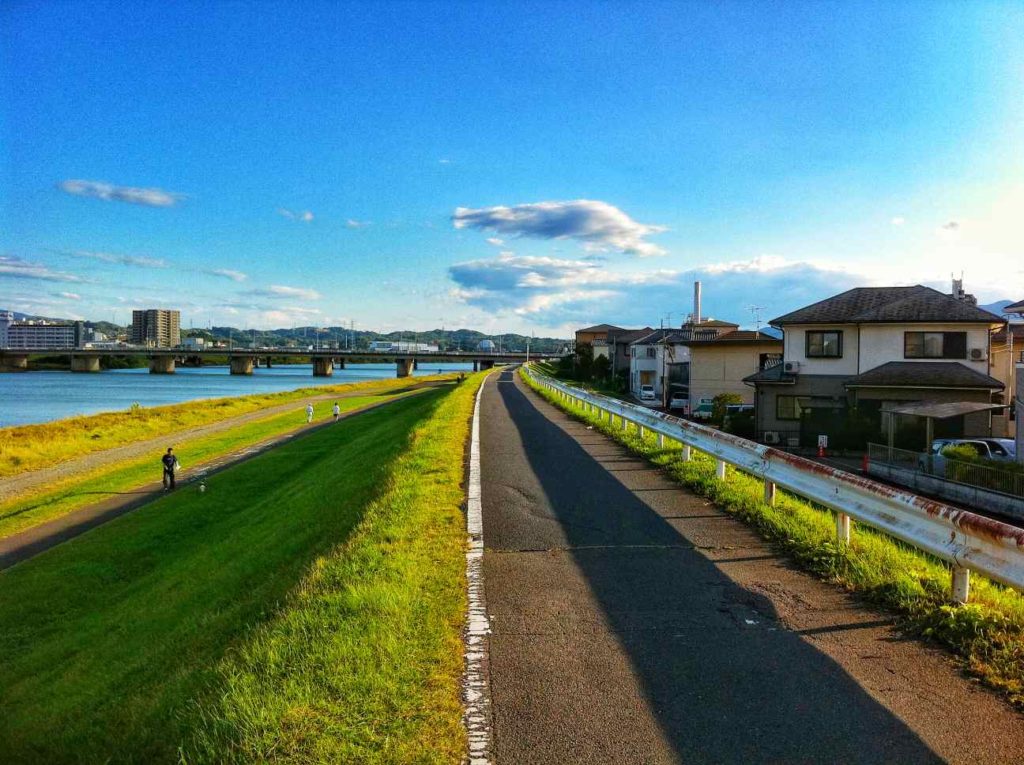
On the other hand, if you are looking for a peaceful and serene place to stroll, allow me to introduce my personal favourite spot. From Oita station (大分駅), walk for approximately 20 minutes across a peaceful residential area, filled with boutique shops and narrow lanes and eventually, we will arrive at the Oita River (大分川). One of the things that I like about Japan is how they keep their rivers clean, and Oita River is indeed no exception.
The whole area is indeed mesmerising, with the crystal clear river being surrounded by grassy lanes as well as the cityscape. On a bright sunny day, one can take their time to take a stroll tp admire the clear blue sky; while observing the locals jogging along the lane and school children kayaking along the river. Along the way, you will also encounter rail tracks and also mini farms, presenting further wonderful opportunities for photos.
Looking For A Place To Soak Your Tired Legs?
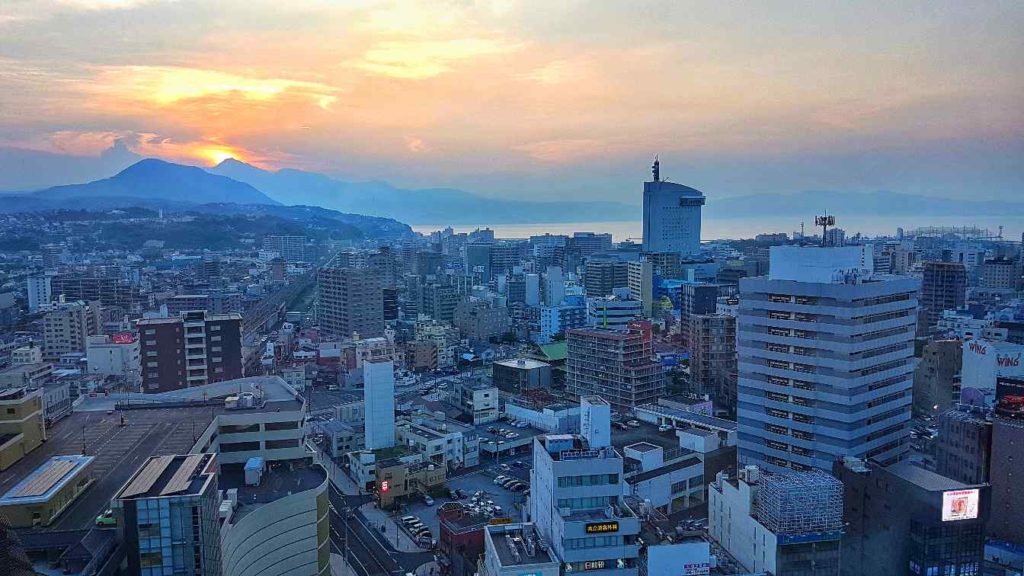
Did you know Oita also features a hot spring/onsen (温泉) on top of a skyscraper? Located on the 19th – 21st floor of the JR Oita City (JRおおいたシティ), City Spa Tenku presents a unique rooftop open-air hot spring together with a stunning panoramic view of the city being surrounded by the mountains and the sea. The hot spring here is a carbonate spring (炭酸泉/tansansen); aka the spring of beauty because of its ability to smoothen the skin and remove dirt.
Also, there are plenty of other facilities to enjoy, such as a Finnish sauna, an Aroma Salt spa, a lounge and a bar; as well as my personal favourite, getting a cold milk drink from the vending machine. The building itself is located conveniently right next to the Oita station, which makes it easy to find. The best time to visit here is during the evening, when the temperature is cooler and also you may be able to admire the sunset while relaxing under a hot bath. Be sure to check out their website here to learn more about the customs of entering the hot spring prior to visiting.
Admission Fee: 1,600 Yen for spa only, 2,000 Yen for both spa, healing spa and lounge
Operating Hours: 11 am – midnight all year round
More Info Here: City Spa Tenku
Nightlife in Oita
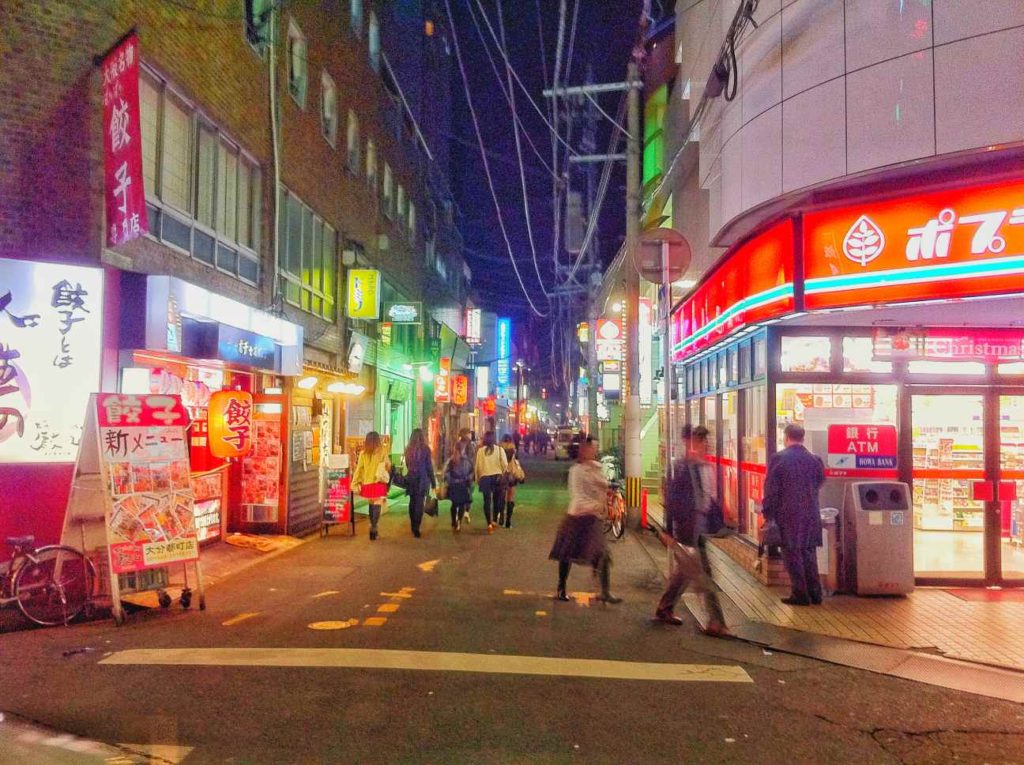
Unlike many other major cities in Japan, Oita’s night life is relatively tame in comparison. Regardless, it does feature a couple of night spots that are worth exploring in a countryside city.
The city’s nightlife center; streets lighted by neon lights, containing bars/izakaya (居酒屋), ramen shops, karaoke outlets (カラオケ), as well as hostess bar. On Friday and Saturday nights especially, this place will be packed with people, together with taxis passing along the narrow streets. Weekday nights on the other hand will be less crowded; but there will be more salarymen that hangs out here for a drink after work.
In fact, for those who wanted to try out a local izakaya, look out for Ginzan-tei (銀山亭); an establishment serving locally produced juicy grilled beef/yakiniku (焼肉) that compliments perfectly with a glass of cold beer. Check out the map here if you are interested. Or head to the food section if you are looking for a more exotic dining experience in this area.
On the other hand, if you are looking to sing your lungs out; places such as the Snack Oasis (スナックオアシス) and Shiroi Hana (白い花) offer a variety of songs to choose from; together with all-you-can drink (Nomi-hodai/飲み放題) whisky and shochu and meat skewers at reasonable prices.
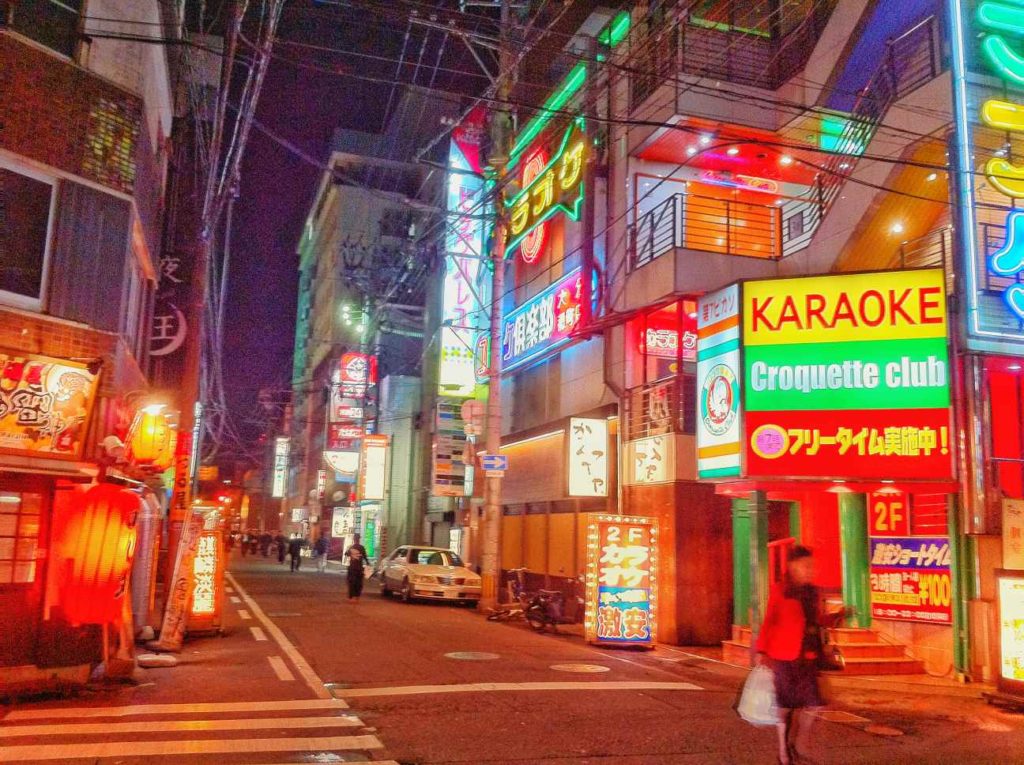
Attractions In Oita For Families With Kids
Home to over 1,500 macaques that once roamed freely across the hills and the neighbouring villages. Today, this garden is a popular destination among locals; while resembling more of a sanctuary instead of a zoo. Interestingly enough, the park started in 1952; whereby the local council established the park specifically to keep the macaques out of the neighbouring villages.
If you love animals, consider visiting Takasakiyama Garden as you will be mesmerised by the sight of groups of macaques roaming freely around the park just like their own turf.
Admission Fee: 520 Yen
Operating Hours: 9 am – 5pm all year roun
More Info Here: Takasakiyama Garden
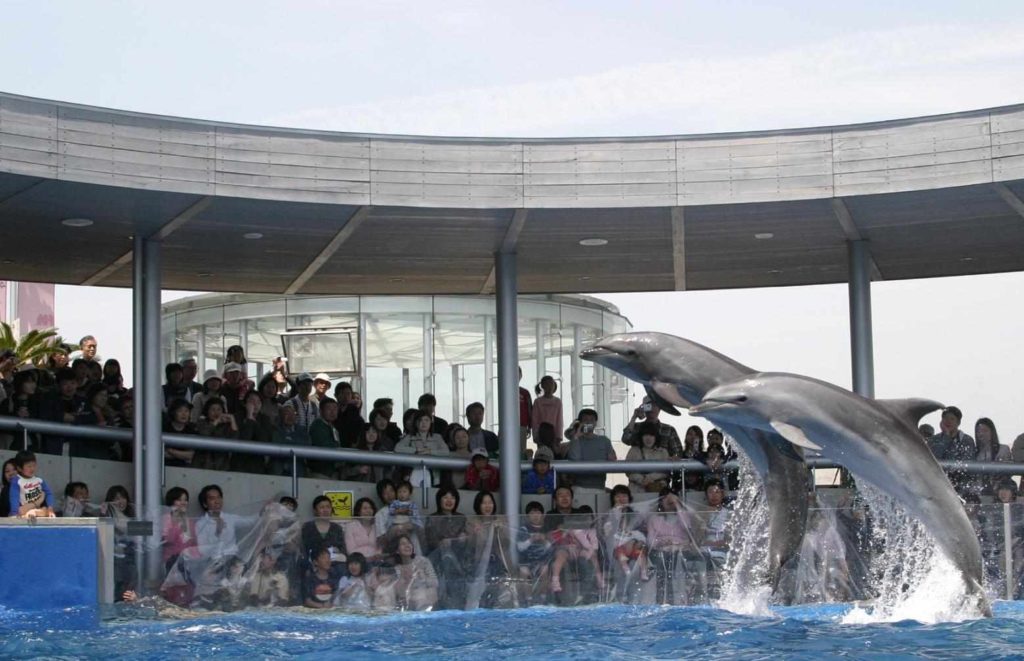
Literally translates as ‘Sea Egg’, it is the nickname of the Oita Marine Palace Aquarium and also a well-known local destination. Unlike many other aquariums, Umi Tamago is designed similarly to an art museum; with visitors being able to witness the sea creatures up-close and befriend them through the aquarium’s touch pools.
In particular, the aquarium’s star of attractions; the dolphins, seals and walruses are popular among the children for their hilarious live performances. For families and animal lovers, consider visiting Umi Tamago together with the Takasakiyama Garden; as it is just right opposite of the aquarium.
Admission Fee: 2,300 Yen
Operating Hours: 9 – 6 pm Mar – Oct (5 pm Nov – Feb). Advisable to check the website below for closure days for facilities maintenance prior to visiting.
More Info Here: Umi Tamago
Shopping in Oita
For a little city, Oita surprisingly does have a variety of options especially for the shopaholics. The best part is that the city is less crowded compared to the larger cities; which undeniably allows for one to explore the shopping areas at their own leisure.
Street Shopping
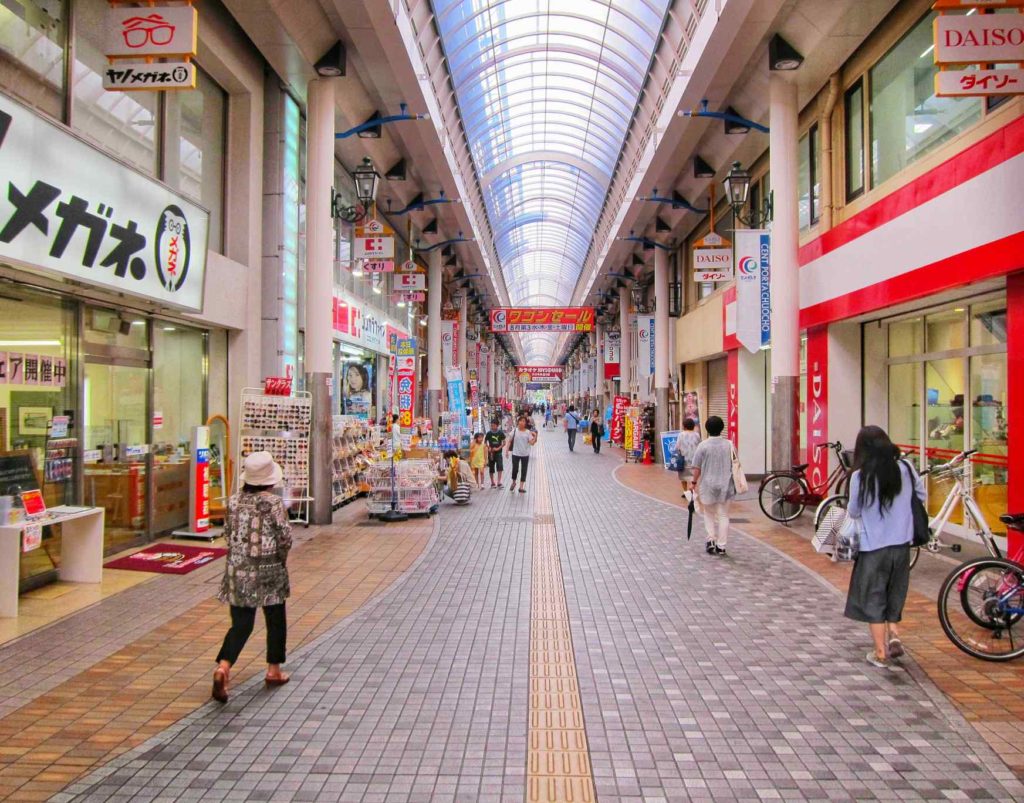
Located just 5 minutes walk from Oita station (大分駅), together with a cozy translucent shelter and airy environment, these shopping arcades are easily-accessible and provide a comfortable environment for visitors to explore. There is also plenty of shops to look out for; ranging from local and fast-food restaurants, kitchenware, electronics and souvenirs. For those who prefer variety and good deals, look out for the two-story Daiso (ダイソー), as well as the drugstore Matsumoto Kiyoshi (マツモトキヨシ); both offering a variety of products including cosmetics, household items and souvenirs at affordable prices.
Additionally, cafes including Lani Cafe Place (known for their stylish ambience and delicious pancakes) and Moff Animal Cafe (a unique cafe where you can play with cats) are great places to stop by for the cafe lovers. And if you are bored of shopping, head towards the Taito F Station (タイトFステーション) just opposite Matsumoto Kiyoshi to check out the latest arcade games. This arcade was my go-to spot during my exchange days and features a variety of games such as fighting games, shooting games, racing games and also the local’s fan favourite rhythm games (usually either playing a musical instrument like a drum, guitar or taiko (太鼓) or dancing according to the rhythm to nail the highest scores).
Those Who Prefer Indoor Shopping
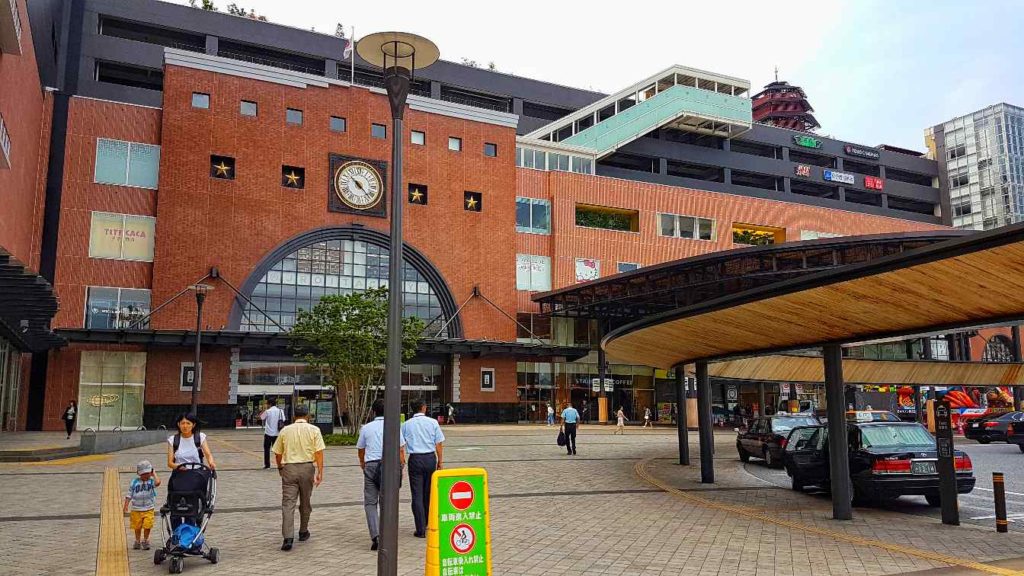
Just conveniently on top of the Oita JR train station lies the Amu Plaza shopping center. Amu Plaza features a variety of stores, ranging from cosmetics and fashion, household goods, electronics, restaurants and also a nail salon. Some of the featured brands include international brands like H&M and Body Shop, together with local ones such as Uniqlo (ユニクロ) and ORiental TRaffic. One section not to be missed is the Bungo Niwasaki Market (豊後にわさき市場), an entire section featuring over 30 stores that sell local snacks, meal bentos (弁当) and pastries; all packaged and beautifully wrapped, making them wonderful take-home souvenirs.
For the movie goers, be sure to check out the 4th floor, containing Toho Cinemas for those who are keen in checking out some local Japanese movies. While for scenery lovers like myself, I would certainly recommend checking out the top floor; as the mall offers a city view from the top. Furthermore, the rooftop includes café and even a children’s playground where you can relax and enjoy the breathtaking city view.
Operating Hours: 10 am – 8.30 pm (Mon – Thu); 10 am – 9.00 pm (Fri – Sun, public holidays, and the day before public holiday)
More Info Here: Amu Plaza Oita
Also if you love to find out more about other shopping spots in Oita, do subscribe as I will cover them in a separate article in the future.
For The Foodies
Despite its relatively humble background, Oita features a variety of hearty cuisines waiting to be explored.
The Trademark of Oita's Local Specialties
THE trademark dish of Oita; and indeed an incredibly filling meal. Toriten (鶏天) basically is small pieces of chicken marinated with sake, soy sauce and garlic powder; and then deep-fried in tempura (天ぷら). It is overall slightly softer in texture compared to other fried chickens, while retaining the fillingness of the meal. Tori (鶏) refers to chicken while Ten (天) for tempura; hence the name Toriten.
The dish is often served together with fresh salad along with mustard and Ponzu sauce (sour citrus mix with soy sauce and vinegar). Undoubtedly the best way to enjoy Toriten is to dip it with the mustard and Ponzu sauce before eating it; as the sour flavour compliments perfectly with the sweetness and crunchiness of the Toriten.
Look out especially for Ekitei (驛亭) which serves good Toriten. This restaurant is conveniently located inside Amu Plaza which is right above the JR Oita train station; within the 1st floor inside the Bungo Niwasaki Market (豊後にわさき市場).
Looking For A Healthier Option In Oita?
A hearty local specialty, featuring thick wheat noodles served in miso soup; together with onions, leeks, taro, carrots and my personal favourite, shiitake mushrooms (椎茸). Dango (団子) here refers to wheat flour dumplings, though unlike their rounder Chinese counterparts, the ones in Oita are kneaded until there resemble a flat noodle. Jiru (汁) here refers to soup; hence the name Dango-jiru.
To describe the taste of Dango-jiru as simple alone is simply not enough, given the variety of ingredients served together. It’s a lovely combination of the sweetness which comes from the vegetables together with the saltiness of the miso soup which makes it a hearty meal to enjoy for all. Furthermore, the stretchiness of the noodles allows it absorb the broth’s flavours; which goes amazingly well with the other ingredients.
There are certainly plenty of places in Oita that serves great Dango-jiru; though a local favourite is the low-key izakaya (居酒屋), Kotsu Kotsu-An (こつこつ庵) located in downtown Oita. Kotsu Kotsu-An (こつこつ庵) serves not only delicious Dango-jiru but also tasty sashimis (刺身) and beers especially for those who are looking for a drink in a traditional-style establishment.
If You Don't Mind Splurging
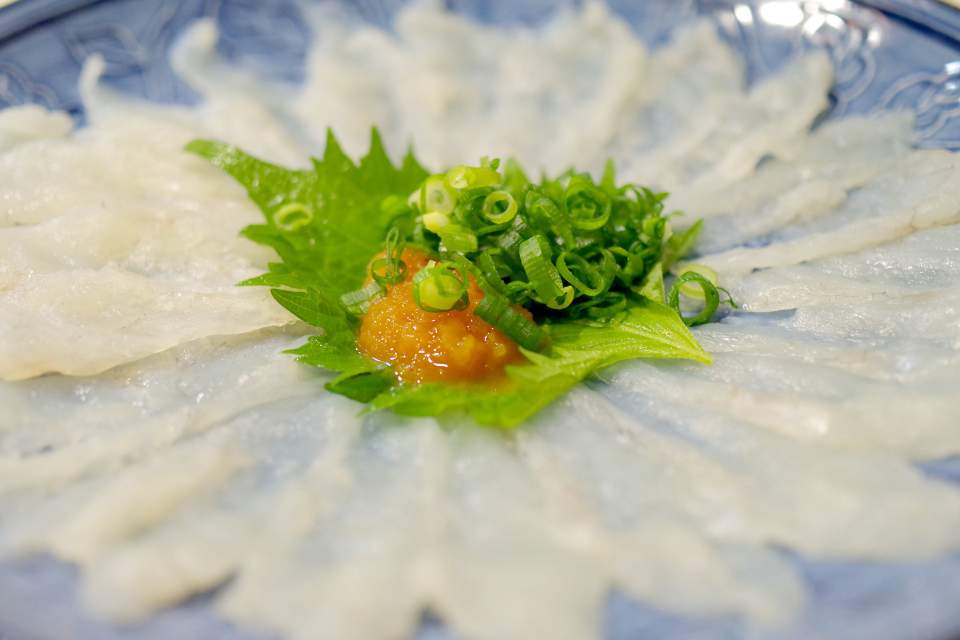
Did you know the prefecture is also known for the infamous pufferfish delicacy, the Fugu Sashi (ふぐ刺し)? Fugu Sashi or pufferfish sashimi slice is a dainty delicacy, undoubtedly prepared with extreme caution by highly trained professional chefs. Not only do restaurants serve Fugu Sashi in various thin slices, but also the plating for the plating arrangement is surprisingly beautiful; which makes for a lovely photo opportunity for the foodie Instagrammers.
Fugu Sashi is known for its delicate taste; with a mild seafood flavour together with a chewy texture that is gentle to the taste buds. A popular spot among the locals to try Fugu Sashi would be Fukutei (ふく亭), a traditional and classy restaurant located in Miyakomachi (都町) that serves a variety of fugu meals which will certainly satisfy your craving for an exotic dining experience. (Estimate range of spending for a fugu course meal = Yen 10,000 ~ 15,000.)
Getting Out of Oita
As a matter of fact, the best attractions of Oita are located outskirts of the city which requires a bit of traveling. If you are willing to travel however, then you will be in for a treat as the prefecture contains a wide variety of fascinating points of interest waiting to be explored. Most notably, one should check out the onsens (温泉) or hot springs; given that the prefecture is renowned for them.
If you are here for hot spring hunting, look no further than both Beppu (別府) and Yufuin (由布院). Both cities feature a variety of hot springs; with Beppu being more city-like and closer to Oita while Yufuin resembles more of a European-town like nestling within the mountains. For history lovers, check out Kitsuki (杵築), the only sandwich castle town in Japan and Usa Jingu (宇佐神宮), one of the very first Shinto shrines that have existed. A special mention goes to the nearby Kunisaki peninsula (国東半島) as well, notable for its authentic mountain temples and also off the beaten track sceneries that are stunningly beautiful.
- For the history lovers, check out these 9 surprisingly charming historic cities nearby.
- If you are planning a road trip, look out for the 9 best destinations nearby the town of Usa.
- For a quiet spot to enjoy the fall foliage, check out Bungoono & Fukoji Temple
Also if you love to find out more about other attractions nearby Oita (including Beppu & Yufuin), be sure to subscribe as I will cover them separately in the future.
How To Travel To Oita
By Train
Despite its rural location, Oita is well-connected by the Japan Rail (JR) line; making it easily accessible from other cities. To get to Oita, simply board a train and then disembark at Oita station (大分駅).

Also, here are the costs and duration of travel from various cities in Japan:
I would suggest getting the JR Pass (JR パース); especially if you are traveling from the above cities. The JR Pass is a handy all-you-can-ride pass on all JR lines in the country; which presents a great opportunity to save costs and also breeze through the JR train stations. In fact, a friend of mine traveled two-way between Osaka and Oita, together with a few other cities; and managed to save 10% of his costs. The JR pass is especially worth considering if:
- Traveling between cities and other regions; such as Osaka – Oita.
- Love trying out the bullet train/shinkansen (新幹線) experience.
- Are traveling extensively on JR lines and also intend to save the hassle of purchasing a ticket for every ride.
- Travel solo, in a couple or a smaller group.
- The pass only covers for JR lines related; so other rail company lines/transportation are excluded.
- Additionally, the pass is not applicable for usage of the JR’s two fastest trains; the Nozomi (のぞみ) and Mizuho (みずほ). This is important especially if you are traveling from cities further than Osaka like Tokyo; whereby the only direct option to Oita is the Nozomi. In this case, booking a flight will be the better option.
By Car
The more flexible option to consider in case you are traveling within Kyushu. Renting a car undoubtedly provides more flexibility; especially for those seeking to explore deeper into the rural areas and also going for road trips. This essentially applies for Oita Prefecture as well; as there are plenty of destinations that are much easier to access with a car.
In fact, a friend of mine used Tocoo; Japan’s leading rental car website which is reliable and provides a wide selection of cars with affordable rates. Are you unsure of getting the necessary license and familiarising with the rules of driving in Japan? Fret not as they provide comprehensive and elaborate guides in their site regarding driving in Japan. Click here to embark on a wonderful journey of driving through the countryside of Japan.
Driving is a wonderful option in general if you:
- Love going on road trips and also admiring the scenery along the way.
- Are traveling with a family; especially with kids and senior citizens.
- Enjoy the convenience and flexilibity a car is able to offer.

- If you are opting for Tocoo rental car, be sure to opt for the ETC rental as well. It allows you to pass through tolls with ease without having to queue or prepare cash to pay toll, and also discounts on tolls during certain times. Read here for more info.
Oita Travel Tips and Where To Stay
Oita Station Facilities
Look out for the Oita City Tourist Information Center (大分市観光案内所), located on the first floor on the north side of the station. The center contains brochures in various languages as well as English support staff especially for those who do not speak Japanese (English-speaking locals are a rare find in this city).
Operating Hours: 8.30 – 7.00 pm (8.30 – 5.00 pm from 31 Dec to 2 Jan)
Location:
Did you know the station also provides a coin lockers facility to store baggage? It is located conveniently right next to the Oita Tourist Information Center, where one can find a variety of locker sizes to choose from based on their luggage size. These lockers come in various sizes, including small, medium, large and also extra large. With just a small fare, one can store their baggage up until 3 days (the fares being 400, 600, 700, 900 yen respectively as of 30th September 2021).
Did you know Oita is also a wonderful place to explore by cycling? Head to the southern exit of the station (南口), and then turn left until you see a bicycle rental shop at an underpass. Oita Station Rental Cycle Port (大分駅レンタサイクルポート) offers rental bicycles for those who love cycling at an affordable rate of 210 Yen per day. Furthermore, the city’s mild traffic certainly provides a relaxing environment to cycle and explore around. Overall, if you are looking for a free-and-easy tour, renting a bicycle will be a great option to consider.
Operating Hours: 7.30 – 7.30 pm everyday
Location:

Where To Stay
Accommodations in Oita city do vary from affordable to luxury; without doubt providing plenty of options for travelers. Budget-friendly hotels like Oita Regal Hotel and Green Rich Hotel Oita Ekimae offer comfortable and clean rooms; while being located within walking distance to the city’s train station. There are also near to the convenient stores like 7-Eleven and Family Mart; where you can hop in to get a midnight snack in case you are hungry.
On the other hand, if you favour a little more luxury and/or coming along with a family; hotels such as Hotel Nikko Oita Oasis Tower and JR Kyushu Hotel Blossom Oita are wonderful choices. Both hotels provide a number of facilities including restaurants serving a variety of delicacies, bars, spacious rooms, 24-hours service desk and also gorgeous views of the city especially during sunset.
Learn more about the accommodation options here; and also be sure to subscribe as I will cover more accommodations in the prefecture in the future.
You can opt to choose a non-smoking room when booking a hotel room in Japan (most hotels in Japan do provide non-smoking rooms). To do so, simply choose the non-smoking room option in the booking website, or if you are booking via the reception, simply tell the receptionist ‘Kin-en-shitsu o-ne-gai-shi-ma-su (禁煙室お願いします)’ which means ‘non-smoking room please’.
Best Time To Visit
It is all down to your personal preferences when it comes to the best time to visit. Personally, I prefer to visit during autumn (Sep – Nov), mainly for the fall foliage; while avoiding summer (Jul – Aug) due to the heat and the humidity. Here are some points to note for each season:
- Spring: A preferred season to visit Japan for many; mainly because of the cool weather and also the cherry blossoms (blooming period begins during mid-March). Sites such as the Kitsuki Castle, Funai Castle and Isshinji are to look out for during this period.
- Summer: The heat wave season and temperatures can reach up to 37C. However, it is also the best time to indulge in the cooling summer treats like the kakigori (かき氷) shaved ice; as well as experiencing the local mesmerising Tanabata festival (七夕祭り) in early Aug.
- Autumn: Undoubtedly the go-to period for all fall foliage fans. In fact, the peak of the fall foliage is from mid-Oct to mid-Nov. Sites to look out for during this period are Bungoono, Yufuin and the Kunisaki peninsula.
- Winter: Temperatures can reach as low as -4C between Dec and Feb; though snowfall in Oita is minimal. Also the perfect moment to soak in the hot springs; Oita’s highlight attraction. Undeniably a wonderful time to go on onsen-hunting throughout the cities of Beppu and Yufuin.
Consider visiting Oita during the off-peak seasons especially during Jan, early-mid Apr, mid-late May, June and Nov; where the transportation and lodging fees are generally cheaper.
Overall Thoughts
Oita is certainly an underrated city to look out for; especially if you are a fan of the countryside. The prefecture itself is rich in not only hot springs, but also history and culture that has been forgotten by many. Bear in mind though, if you are having an expectation that the city is going to be English language-friendly, you will be sorely disappointed as like many rural areas in Japan, finding a proficient English speaker is like finding a needle in a haystack. In fact, I would not hesitate to recommend visiting Oita especially if you:
- Prefer to explore the lesser touristy and more rural parts of Japan.
- Are looking out for a place to stay and brush up your Japanese proficiency (the city is home to Oita University (大分大学), a really awesome place to learn Japanese as most locals speak limited English).
- Love exploring and dipping yourself into hot springs/onsen.
- Are a fan of hiking (the mountains here are really gorgeous).
Loving the content here?
Subscribe and get your free hidden gems in Japan bucket list here.


You May Also Like
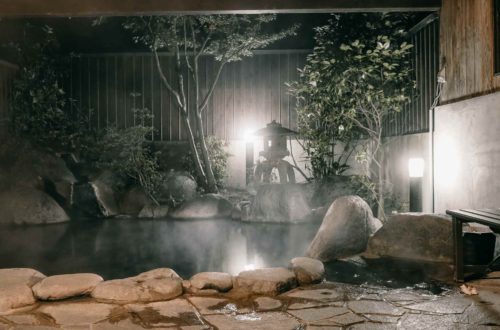
8 Genuine Onsen Spots Nearby Oita, Other than Beppu
January 8, 2022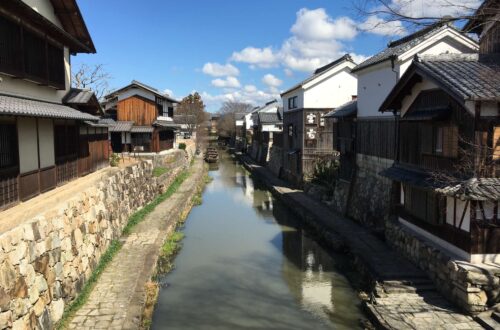
Omihachiman – Planning Your Complete Daytrip to the Venice of Japan
September 27, 2025